Part Four of the What Buddhism Taught Me About Travel series
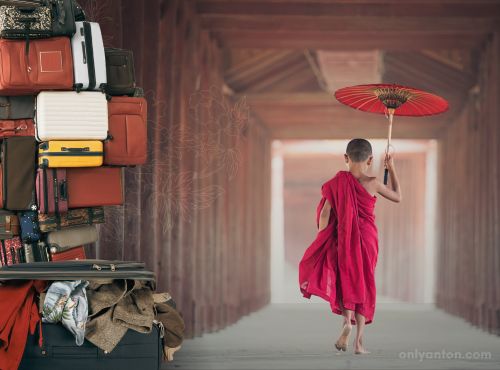
Introduction
Travel is like packing a suitcase: the more we try to fit in, the heavier the load. But what if the secret isn’t finding a bigger bag or squeezing in more? What if it’s learning to carry less? Research even backs this up: travellers who embrace flexibility and let go of rigid plans report deeper satisfaction and more meaningful experiences. It turns out that the most powerful travel skill isn’t perfect planning—it’s the art of letting go.
Letting Go
In Buddhist teachings, letting go (vossagga in Pali) means releasing attachment to desires, fixed outcomes, and rigid self-identities. It’s not about giving up or becoming indifferent. Instead, it’s about cultivating freedom from clinging and accepting life’s impermanent nature (anicca). This mindset is especially valuable in travel, where unpredictability is inevitable.
Letting go can often be misunderstood as passivity or resignation. However, Buddhism teaches that letting go is an active, intentional practice. It involves fully engaging with the present moment while releasing attachment to specific outcomes—a skill that transforms both travel and life.
Planning with Intention, Letting Go with Grace
While travel requires some planning, embracing uncertainty means treating plans as flexible guides rather than rigid contracts. This balance between thoughtful preparation and open-minded exploration lies at the heart of letting go.
This post is part 4 in the What Buddhism Taught Me About Travel series, continuing from previous installments: “Managing Expectations in New Places” and “Seeing Reality Where You Are.” Here, we’ll explore the meaning of letting go, how it differs from giving up, and practical ways to release physical, emotional, and mental baggage. We’ll also discuss balancing desire with non-attachment and incorporating meaningful rituals into travel experiences.
Section I: The Meaning of Letting Go in Buddhism
In Buddhist thought, letting go (vossagga in Pali) means freeing oneself from attachments—desires, fixed identities, or rigid expectations—which are sources of suffering. It involves releasing tanha (craving) and upadana (clinging), the roots of dissatisfaction as described in the Four Noble Truths. Crucially, letting go does not imply detachment from life or emotional withdrawal. Instead, it points to the ability to engage with the world without being ensnared by possessiveness or control.
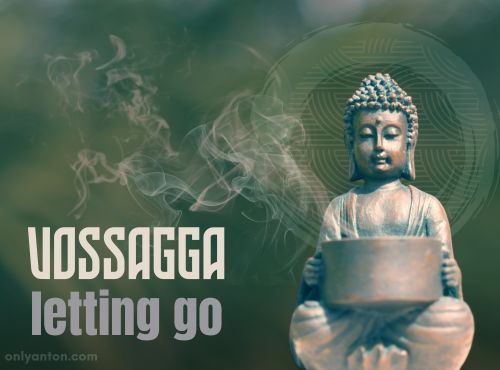
Related Themes from Earlier Posts:
- Expectations and Desires: As explored in Managing Expectations in New Places, unchecked desires create suffering through unmet expectations. Learning to let go mitigates this suffering by fostering acceptance.
- Idealizations and Distorted Perceptions: In Seeing Reality Where You Are, we discussed how idealized visions distort our perceptions. Releasing attachment to these mental constructs allows us to see things as they truly are.
Are you curious about how expectations and perceptions shape travel experiences? Check out the earlier posts: “Managing Expectations in New Places” and “Seeing Reality Where You Are” for deeper insights.
Key Teachings Linked to Letting Go
The Buddhist principle of letting go is grounded in several foundational teachings that illuminate why clinging leads to suffering and how releasing attachment can foster inner peace. Three principles are central to this understanding:
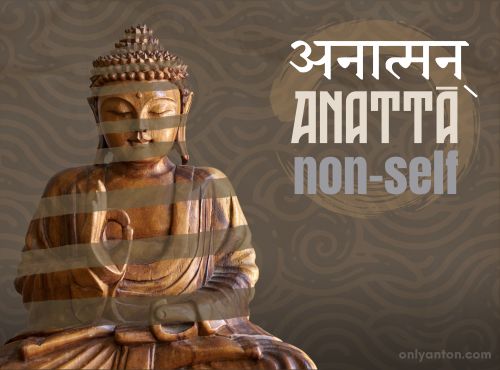
- Impermanence (Anicca): Everything is transient. Accepting this truth reduces suffering by softening our resistance to change. Example: A missed flight might seem disastrous, but accepting the change can open the door to unexpected discoveries.
- Non-Self (Anatta): The notion of a fixed identity is an illusion. Letting go of ego-driven control opens the door to greater peace. Example: Releasing the need to be seen as a “perfect traveller” frees us to enjoy experiences without constant comparison.
- Equanimity (Upekkha): Balance arises when we accept life’s highs and lows without grasping at permanence or rejecting difficulty. Example: Staying calm when plans shift allows for creative problem-solving and deeper enjoyment.
Example: The Parable of the Two Monks
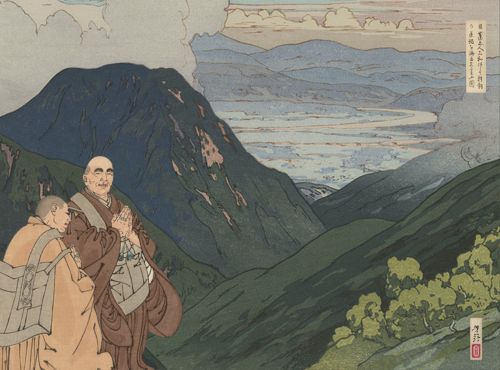
A well-known Buddhist story beautifully illustrates the practice of letting go. Two monks, one senior and one junior, were travelling together when they came to a river with a strong current. A young woman waited by the river, unable to cross. She asked the monks for help, but their sacred vows forbade touching women.
Without hesitation, the senior monk picked up the woman, carried her across, and set her down on the other side. The junior monk followed, shocked by the older monk’s actions, but said nothing. Hours later, unable to contain himself, the younger monk exclaimed, “Why did you carry that woman when we took a vow not to touch women?” The senior monk replied calmly, “I set her down hours ago by the side of the river. Why are you still carrying her?”
The story reminds us that clinging—whether to rules, expectations, or judgments—causes unnecessary suffering. Letting go allows us to act with wisdom and compassion in the moment and move forward unburdened.
Letting Go in the Context of Travel
The practice of letting go requires mindfulness and intentional surrender. It means relinquishing control, surrendering rigid plans, and embracing uncertainty. In meditation, this means observing thoughts and emotions without clinging. However, letting go extends beyond mental habits into active travel practices.
In the context of travel, it means welcoming experiences as they come and letting go of preconceived ideas about how a journey should unfold. A cancelled flight, a missed connection, or an unexpected detour can be opportunities for discovery rather than setbacks—if we are willing to let go.
Ultimately, letting go is not about passivity or inaction. It is a dynamic, ongoing practice rooted in mindfulness and upekkha (equanimity). By releasing attachment, we invite spontaneity, resilience, and a deeper connection to the journey—transforming both travel and life itself.
Section II: Letting Go Versus Giving Up
The idea of letting go—central to Buddhist practice—has sometimes faced criticism for promoting passivity or resigned acceptance. This misunderstanding is not unique to Buddhism. Similar critiques have been directed at other philosophies that emphasize acceptance and inner peace, such as Taoism and Stoicism. However, a closer look reveals that these traditions advocate mindful engagement with life rather than withdrawal.
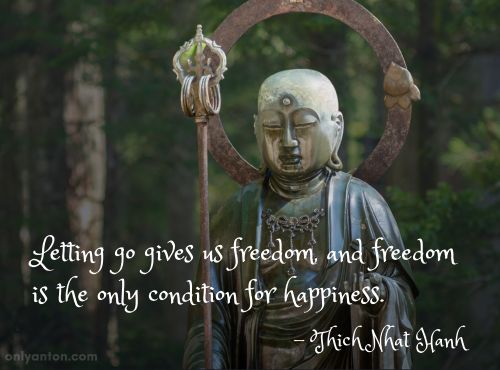
Philosophical Concerns
Some critics argue that philosophies focusing on detachment and the acceptance of suffering can lead to a passive acceptance of the status quo, reducing the motivation to improve oneself or society. If desires are relinquished and outcomes accepted, what motivates action? These questions reflect a misunderstanding of the active nature of letting go.
Response to Critics
- Buddhism: The Eightfold Path includes Right Action and Skillful Means, emphasizing compassionate and purposeful engagement with the world.
- Taoism: Wu Wei suggests effortless yet purposeful action, working in harmony with life’s flow without force or resistance.
- Stoicism: Stoicism stresses controlling responses, not fate—remaining resilient and morally grounded even in adversity.
These philosophies emphasize a balance between contemplation and action. Inner peace and mindfulness are seen as foundations for effective and compassionate action in the world.
The Buddhist emphasis on “right action” and “right effort” is part of the Noble Eightfold Path. The idea involves taking compassionate and ethical actions to alleviate suffering in oneself and others. Mindfulness practices in Buddhism encourage active awareness and presence in each moment, leading to thoughtful and deliberate actions rather than passivity.
Moreover, many Buddhist traditions and modern Buddhist leaders advocate for “Engaged Buddhism,” which applies Buddhist principles to social, political, and environmental activism. This approach demonstrates that Buddhism can be a force for positive change and social justice.

Dalai Lama’s Conception
The Dalai Lama, for example, advocates for compassionate ambition, where the drive to improve oneself and help others is guided by compassion and altruism rather than selfish desires. One must maintain a balance between striving with care without an unhealthy attachment to outcomes.
According to the Dalai Lama, one of the key paradoxes in Buddhism is that we need goals to be inspired, grow, develop, and even become enlightened. At the same time, one must not get overly fixated or attached to these aspirations. If the goal is noble, one’s commitment to it should not be contingent on one’s ability to attain it. In pursuit of a goal, one must release rigid assumptions about how one must achieve it. Peace and equanimity come from letting go of attachments to the goal and the method. That is the essence of acceptance.
The Dalai Lama also emphasizes the importance of inner peace as the foundation for outer action. Individuals can take effective and compassionate actions by cultivating inner peace through practices like meditation without being overwhelmed by attachment to outcomes. Letting go thus becomes a source of strength that fosters resilience, ethical behaviour, and a deeper connection to life’s unfolding journey.
Section III: Letting Go of What You Carry—Physical, Emotional, and Mental Baggage
Letting go isn’t just a philosophical concept. It’s a practice that travellers can cultivate through intentional actions. While earlier sections explored the deeper meaning of releasing attachments, this section focuses on applying that understanding in practical ways.
Travel is uniquely suited for practicing the art of letting go because it constantly disrupts routines and expectations. Every trip offers a chance to reassess what we carry—physically, emotionally, and mentally—and to decide what we can release to move through the world with greater ease and openness.
Letting go isn’t a one-time event but an ongoing skill. Whether we’re packing a suitcase, managing travel anxieties, or navigating unexpected detours, each moment invites us to practice surrender and adaptability. The following sections explore how to lighten your load, inside and out, through mindful travel practices.
1. Physical Baggage: Packing Light as a Symbol of Freedom
- Minimalist travel practices can reduce physical burden and cultivate freedom. Bringing only what’s essential encourages adaptability and lessens travel stress.
- Action Tip: Create a minimalist packing list focused on essentials. Challenge yourself to pack only items that serve multiple purposes.
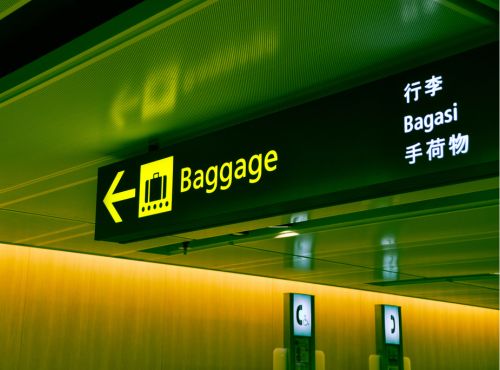
2. Emotional Baggage: Releasing Travel Disappointments and Anxieties
- Past travel frustrations, regrets, or anxieties about future trips can weigh heavily. Holding onto these emotions prevents us from fully embracing new experiences.
- Action Tip: Journal about past travel challenges, reflecting on lessons learned. Use this practice to reframe negative experiences as opportunities for growth.

3. Mental Baggage: Letting Go of Rigid Plans and Perfectionism
- Over-planning and the pursuit of perfection can stifle spontaneity. Leaving space for unplanned moments allows for unexpected adventures and deeper connections.
- Action Tip: Leave at least one day unplanned in your itinerary. Follow local recommendations or wander spontaneously to invite serendipity.
Section IV: Balancing Desire and Non-Attachment
Why Letting Go Is Difficult
Letting go isn’t easy because humans are naturally driven by desires, ambitions, and expectations. These can inspire growth but lead to frustration when outcomes differ from our hopes. In Buddhist thought, this tension is framed through two key concepts:
- Wholesome Desire (Chanda): A positive, value-driven motivation to learn, explore, and improve without becoming obsessed with results.
- Craving (Tanha): An ego-driven attachment to specific outcomes creates suffering when reality doesn’t align with expectations.

Cultivating Equanimity (Upekkha)
The challenge is balancing these opposing forces through upekkha—a state of serene acceptance that allows us to act with purpose while letting go of the need to control results. This balance requires striving with intention but remaining open to the unexpected.
Practical Reflection for Travellers
Setting mindful goals—such as seeking meaningful experiences rather than chasing a perfect itinerary—embodies this balance in travel. We act with purpose but release attachment to how things should unfold.
Action Tip: Define your travel goals based on personal values rather than specific results. Focus on meaningful experiences rather than chasing perfection, and stay open to where the journey takes you.
Section V: Travel Rituals for Letting Go
Letting go can be an active practice. Personal and cultural rituals offer meaningful ways to release attachment and embrace transformation. These acts, whether symbolic or rooted in tradition, help travellers create space for new experiences and perspectives.
Symbolic Acts
Personal rituals can be powerful tools for letting go. Journalling about past experiences, leaving behind tokens in meaningful places, or engaging in mindful walking meditations can all symbolize release. These small acts create a moment of mindfulness, allowing you to leave behind emotional or mental weight as you move forward in your journey.
Cultural Examples
Letting-go rituals are woven into the fabric of many cultures, reflecting the shared human need to release burdens and embrace transformation. Tibetan prayer flags, for instance, symbolize prayers and blessings carried into the wind, a poignant reminder of impermanence and interconnectedness.
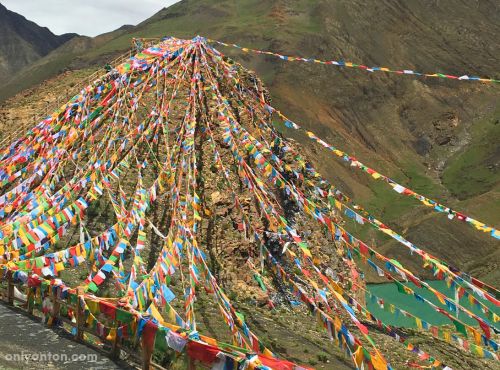
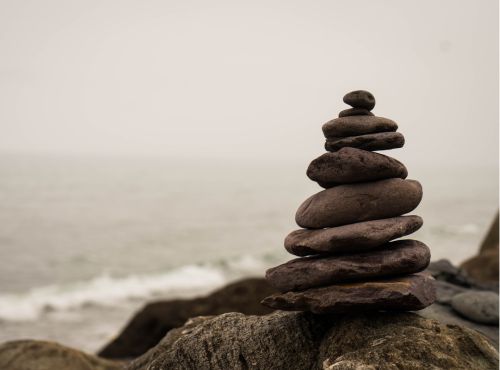
In Japan, offering stones are placed at temples to represent leaving behind emotional or spiritual burdens. This practice resonates with the use of cairns or Inuit inuksuit (the plural of inukshuk) in other traditions, which serve as markers of guidance, gratitude, or reflection along a journey.
Another modern ritual can be seen in the love locks left on bridges in cities like Paris, Cologne, or Amsterdam. While often associated with romantic devotion, these locks can also signify the release of past emotions or the marking of a new chapter in life.

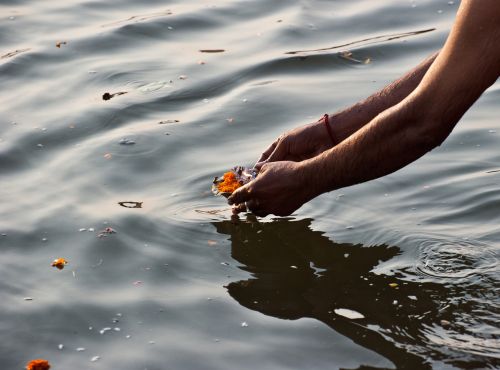
Pilgrimages, such as the Camino de Santiago in Spain, serve as profoundly transformative journeys, where travellers metaphorically and literally leave behind the weight of their daily lives. Similarly, in India, rituals like releasing flower offerings into the Ganges symbolize the letting go of attachments and the pursuit of spiritual renewal.
These rituals, whether ancient or modern, remind us that letting go is not just a personal act but a universal one deeply embedded in our collective consciousness.
Action Tip
Try incorporating a simple letting-go ritual into your next trip. Write a note or journal entry about something you’re ready to release, and leave it behind in a meaningful spot. Alternatively, take a moment for mindful reflection as you walk through a new city or immerse yourself in a natural setting. These small acts can deepen your travel experience and create space for personal growth.
Section VI: Personal Reflection—The Art of Resilience
When my mother visited me in China in 2016, I had meticulously planned a two-week itinerary to show her the best of the country. From the Great Wall to the terracotta warriors and the beauty of the Li River, we were set to experience iconic sights together. But on the very first night, everything changed. While exploring Shanghai, my mother fell and fractured her ankle.
At first, I clung to the hope that the injury was minor, but as her pain worsened during our train ride to Beijing, reality set in. A visit to the hospital confirmed the fracture, and it became clear she wouldn’t be able to continue the trip. I had to let go of the detailed plans I had made for us and the expectations of what this trip was supposed to be.
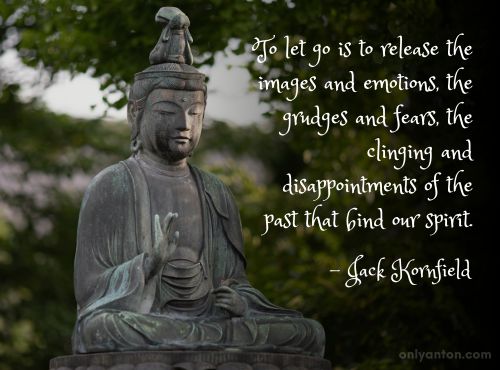
The Choice
After ensuring my mother’s safe return to Canada, I faced a decision: abandon the trip or adapt to this unexpected turn of events. I chose to press on, but now as a solo traveller. The journey that followed was nothing like what I had envisioned, but it became a profound lesson in letting go and embracing uncertainty.
The Lesson
With each stop—Xi’an, Guilin, Hong Kong, and back to Shanghai—I adjusted to solitude. I practiced Mandarin on an app, taught myself to navigate menus in Chinese restaurants, and found joy in quiet moments of cultural exploration. Though the circumstances were far from ideal, I learned to appreciate the unplanned path. Letting go of my original expectations opened the door to resilience, adaptability, and an unexpected sense of accomplishment.
This experience reminded me that travel rarely goes as planned, and that’s where its transformative power lies. By releasing attachment to what should have been, I found meaning in what was—a journey shaped by spontaneity and personal growth.
Conclusion: Travelling Light in All Ways
Letting go is more than a mindset. It’s essential for travel. We explored how releasing physical, emotional, and mental baggage creates space for richer experiences. We examined balancing ambition with non-attachment, embracing spontaneity, and even creating personal rituals for letting go.

Act with Intention, Adapt with Openness
Travel becomes transformative when we accept life’s uncertainties and allow experiences to unfold naturally—while still planning with purpose. By practicing mindful release, we gain deeper connections, resilience, and an openness to the unexpected.
The next post in the What Buddhism Taught Me About Travel series, “Understanding Suffering Along the Path,” will delve into another core Buddhist teaching—how to navigate life’s inevitable challenges with wisdom and grace.
What About You?
Have you ever experienced a journey where letting go led to something extraordinary? What personal “baggage” do you hope to release on your next trip?
I’d love to hear your stories and reflections. How has embracing uncertainty reshaped your travels—or your life? Share your experiences in the comments and inspire fellow travellers on their path to mindful exploration.
Glossary of Terms
These definitions provide a concise, accessible guide to the terms introduced throughout the series:
- Anattā: Non-self, the understanding that there is no fixed, permanent self.
- Anicca: Impermanence, the idea that all things are in constant change.
- Avidyā: Ignorance or misunderstanding, the lack of true knowledge obscuring reality.
- Chanda: Wholesome desire, a positive motivation rooted in ethical intention.
- Dharma: Teachings or truth, often referring to the teachings of the Buddha.
- Dukkha: Suffering or dissatisfaction, central to the Buddhist worldview.
- Karma: The principle of cause and effect through intentional actions.
- Madhyama Pratipada: The Middle Way, avoiding extremes of indulgence and asceticism.
- Metta: Loving-kindness, a practice of cultivating goodwill toward all beings.
- Nirvana: The cessation of suffering and the end of the cycle of rebirth.
- Samma Kammanta: Right action, ethical conduct that avoids harm to others.
- Samma Sankappa: Right intention, the cultivation of thoughts guided by goodwill and wisdom.
- Tanha: Craving or unwholesome desire driven by attachment and ego.
- Upadana: Clinging, attachment that leads to suffering.
- Upaya: Skillful means, using wisdom and compassion to adapt actions effectively.
- Upekkha: Equanimity, a state of balance and calmness amid life’s highs and lows.
- Vossagga: Letting go, releasing attachment to desires, outcomes, and fixed identities.
- Wu Wei: Effortless action, a Taoist concept of flowing naturally with life’s processes.
New terms will be introduced throughout the series as needed, offering deeper insights into the teachings relevant to travel.
Further Reading and Resources
Related Posts on Only Anton
- What Buddhism Taught Me About Travel: The introductory post in this series, exploring how Buddhist teachings can inspire mindful and transformative travel experiences.
- Managing Expectations in New Places: Part Two of the What Buddhism Taught Me About Travel series. Insights into adjusting expectations to cultivate openness and reduce disappointment while travelling.
- Seeing Reality Where You Are: Part Three of the What Buddhism Taught Me About Travel series. Explore how Buddhist teachings can transform travel by helping you see reality as it is, embrace impermanence, and cultivate mindfulness on the journey.
- Mindful Travel: Finding Meaning in Our Journeys: A guide to embracing mindfulness during travel, fostering deeper connections and appreciation.
- Travel and Philosophy: A deep dive into how philosophical perspectives can enrich the way we experience and reflect on travel.
External Resources
Books
- Letting Go: The Pathway of Surrender by David R. Hawkins (2014): This book explores practical methods for emotional release and overcoming internal resistance, offering insights into achieving peace and clarity through surrender. Check your local library, search online, or order a copy here.
- The Power of Letting Go: How to Drop Everything That’s Holding You Back by John Purkiss (2020): A guide to releasing limiting beliefs and emotional baggage, this book provides actionable steps for embracing freedom, purpose, and a more fulfilling life. Discover it at your library, look it up online, or purchase your copy here.
- The Book of Joy: Lasting Happiness in a Changing World by Dalai Lama and Desmond Tutu (2016): Two spiritual leaders share their wisdom on cultivating joy and resilience, focusing on the intersection of inner peace and external challenges. Find it at your library, browse online, or grab your copy here.
- The Art of Living by Thich Nhat Hanh (2023): A profound exploration of mindfulness and the Buddhist teachings on impermanence, love, and interconnectedness, offering practical advice for a meaningful life. Check your local library, search online, or order a copy here.
- Wherever You Go, There You Are: Mindfulness Meditation in Everyday Life by Jon Kabat-Zinn (2023): This classic work introduces mindfulness meditation as a tool for living fully in the present moment, with practical exercises and reflections. Look it up at a local library, browse online, or buy your copy here.
- Buddha’s Little Instruction Book by Jack Kornfield (1994): A collection of inspiring quotes and teachings from Buddhist philosophy distilled into simple, accessible guidance for daily living. See if your library has it, look online, or snag a copy here.
Articles
- “7 in 10 Travelers Prioritize Flexible Booking” by Phocuswright Research (October 2021): This report highlights the increasing demand for flexibility in travel bookings, driven by changing traveller preferences and post-pandemic uncertainties. Find the article here.
- “The Impact of Flexible Business Travel on Employee Satisfaction and Retention” by Rushmi Behrani, Itilite (March 2023): Explores how flexible travel policies improve employee satisfaction and retention, emphasizing the importance of adaptability in business travel. Read the article here.
- “It Takes Most People 3 Days to Unwind on Vacation. Meet the Slowcation” by Joey Hadden, Business Insider (August 2024): Discusses the growing trend of “slowcations,” where travellers book longer trips to relax more deeply and immerse themselves in destinations. Read more about it here.
- “Simple Rituals for Letting Go” by Lauren Tober (January 2018): Offers practical and symbolic rituals for releasing emotional burdens, such as journaling, mindfulness practices, and connecting with nature. See the full article here.
- “5 Teachings on Letting Go” by Tricycle (April 2023): Provides insights into Buddhist teachings on letting go, focusing on themes of impermanence, clinging, and finding freedom in acceptance. Read more here.
- “Suffering and Letting Go” by Jack Kornfield (November 2017): Explores the interplay of suffering and the practice of letting go, drawing on Buddhist wisdom to cultivate peace and resilience. Find the article here.




